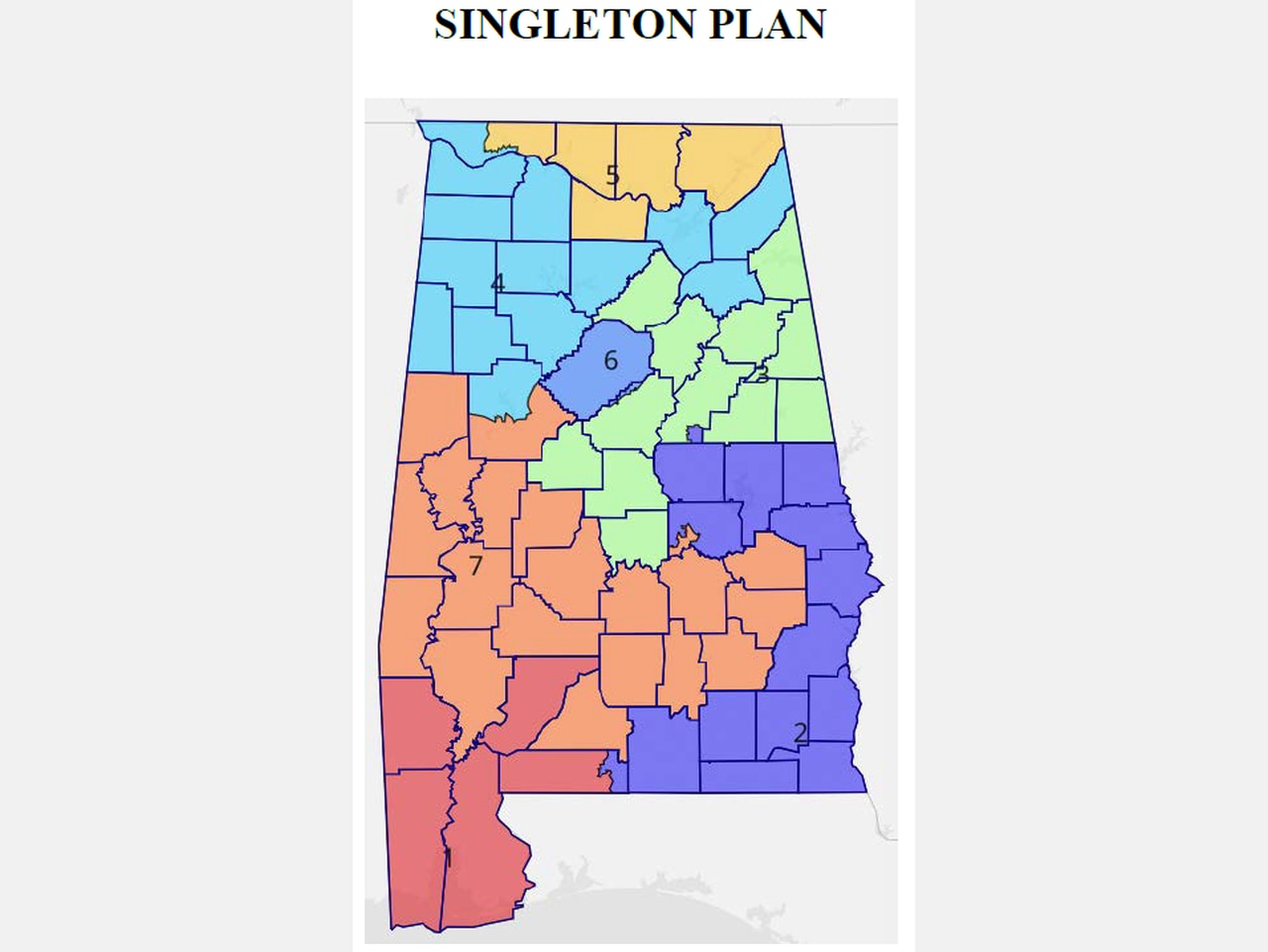Could Democrats win in congressional district that is 40% Black?
Friday is the deadline for objections in federal court to Alabama’s new congressional map, approved by the Legislature during a special session last week.
The U.S. Supreme Court ruled in June that the map used in last year’s elections most likely violates the Voting Rights Act because it dilutes the influence of Black voters. One-fourth of Alabamians are Black but only one of the seven congressional districts has a majority Black voting age population.
The court said that to fix the likely Voting Rights Act violation, the state needed a second majority Black district or something “quite close to it,” creating two districts where Black voters had an opportunity to elect a candidate of their choice, which means a Democrat.
Republican lawmakers passed a new map last week that leaves District 7 as the only majority Black district. Democrats opposed the plan and said it would not fix the likely Voting Rights Act violation.
On Thursday, plaintiffs led by Alabama Senate Minority Leader Bobby Singleton, D-Greensboro, filed their objection to the new map and suggested a map they proposed during the special session.
The Singleton plan proposes District 6 in central Alabama as the second opportunity district for Black voters. The plan would end the longtime practice of splitting Jefferson County, with a redrawn District 6 including all the county and a slice of north Shelby County.
The Black voting age population in the reconfigured District 6 would be 40%. But the preferred candidates for Black voters, Democrats, have received more votes than their Republican opponents in most of the general elections held since 2012 in the redrawn district, Singleton’s lawyers told the court. That’s because Jefferson County has more white voters who support Democrats than in most other parts of the state.
An Alabama congressional map proposed by plaintiffs led by Senate Minority Leader Bobby Singleton. Supporters of the plan say District 6, which would include all of Jefferson County, and District 7 would be two districts where Black votes would have an opportunity to elect a candidate of their choice. (Mike Cason/[email protected]) cdcoun
Under the Singleton plan, the Black voting age population in District 7 would drop from 56% to 49%. But it would remain a district where Black voters have an opportunity to elect a candidate of their choice, giving the state two such districts in accordance with the court’s instruction, Singleton’s lawyers wrote.
Singleton’s lawyers said the splitting of Jefferson County as done since 1992 is an unconstitutional racial gerrymander.
Other plaintiffs in the litigation, known as the Milligan plaintiffs and the Caster plaintiffs, backed a different plan during the legislative session.
That plan, sponsored by Sen. Vivian Davis Figures, D-Mobile, would create a second majority Black district, District 2 in southeast Alabama.
The plan passed by the Legislature increases the Black voting age population in District 2 from 30% to 40%. Republicans who backed the plan said that was to comply with the court’s instructions to create a second opportunity district for Black voters. Democrats disputed that and said they would rely on the court to order a map that fixes the likely Voting Rights Act violation.
A three-judge federal district court, which made the initial finding of the likely Voting Rights Act violation affirmed by the Supreme Court, has scheduled a hearing on objections to the new map to start on August 14.
If the court rejects the new map, it is expected to order one drawn to be used in next year’s elections. The courts asked lawyers for the state and for the plaintiffs to submit names of cartographers the court should consider using to draw a map, should that be necessary.
Secretary of State Wes Allen has told the court a new map needs to be ready by October 1 to prepare for next year’s election, which has the primary on March 5.
Click here to see a zoomable view of the 2021 map, the one used in last year’s elections.
Click here for a zoomable view of the new map passed last week.
Read more: Which counties moved on Alabama’s new congressional district map?
Alabama House speaker tells Nancy Pelosi to ‘pipe down’ for calling congressional map ‘ridiculous’
